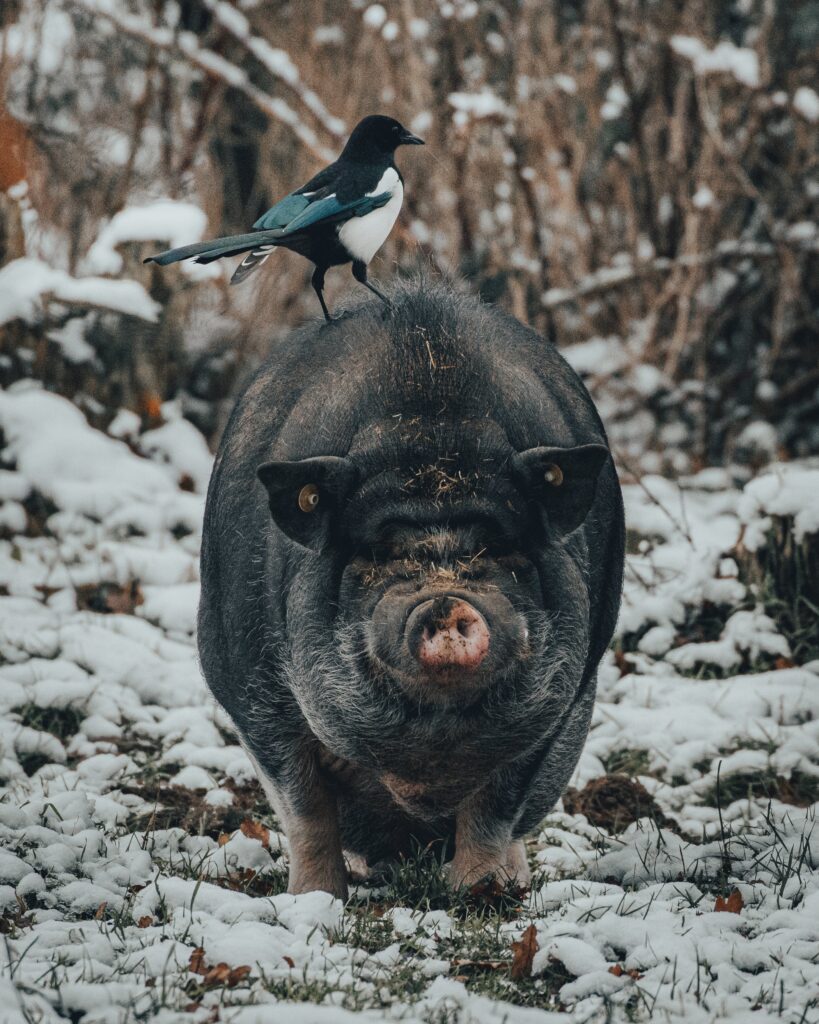This post is part of my attempt at Bloganuary 2024. Today’s prompt is:
What is your favourite animal?
The common magpie, pica pica.

They’re smart (among the smartest corvids, who are already among the smartest birds).
They’re curious. They’re sociable. And they’re ever so pretty.
They’re common enough that you can see them pretty-much anywhere.
They steal things. They solve puzzles. They’re just awesome.

Also, did you know where their name comes from? It’s really cool:
- In Medieval Latin, they’re called pica. It probably comes from Greek kitta, meaning “false appetite” and possibly related to the birds’ propensity for theft, and/or from a presumed PIE1 root meaning “pointed” and referring to its beak shape.
- In Old French, this became pie. They’re still called la pie in French today. Old English took this and also used pie.
- By the 17th century, there came a fashion in English slang to give birds common names.
- Sometimes the common name died out, such as with Old English wrenna which became wren and was extended to Jenny wren, which you’ll still hear nowadays but mostly people just say wren.
- Sometimes the original name disappeared, like with Old English ruddock2 which became redbreast and was extended to Robin redbreast from which we get the modern name robin (although again, you’ll still sometimes hear robin reabreast).
- Magpie, though, retains both parts!3 Mag in this case is short for Margaret, a name historically associated with idle chatter4. So we get pica > pie > Maggie pie > Mag pie > magpie! Amazing!

I probably have a soft spot for animals with distinct black-and-white colouration – other favourite animals might include the plains zebra, European badger, black-and-white ruffed lemur, Malayan tapir, Holstein cattle, Atlantic puffin… – but the magpie’s the best of them. It hits the sweet spot in all those characteristics listed above, and it’s just a wonderful year-around presence in my part of the world.
Footnotes
1 It’s somewhat confusing writing about the PIE roots of the word pie…
2 Ruddock shares a root with “ruddy”, which is frankly a better description of the colour of a robin’s breast than “red”.
3 Another example of a bird which gained a common name and retained both that and its previous name is the jackdaw.
4 Reflective, perhaps, of the long bursts of “kcha-kcha-kcha-kcha-kcha-” chattering sounds magpies make to assert themselves. The RSPB have a great recording if you don’t know what I’m talking about – you’ll recognise the sound when you hear it! – but they also make a load of other vocalisations in the wild and can even learn to imitate human speech!